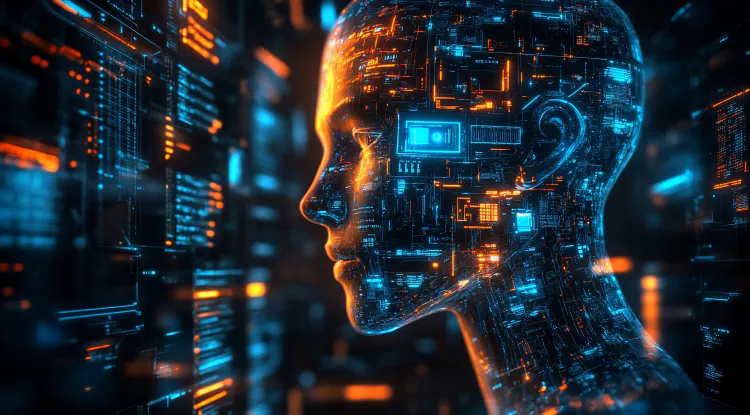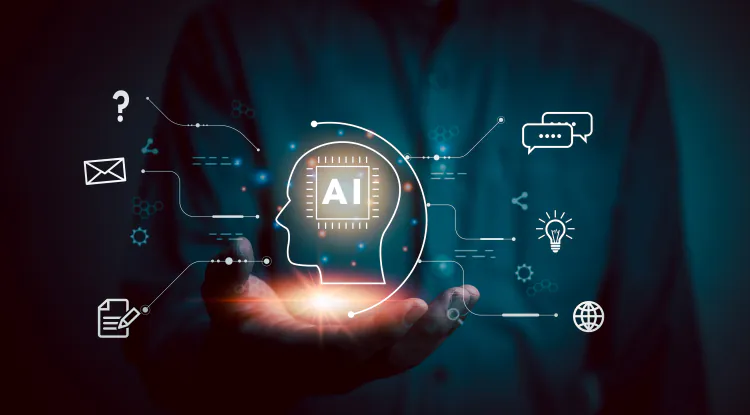Beginner’s Roadmap to AI and Machine Learning: A Comprehensive Guide
Artificial Intelligence (AI) and Machine Learning (ML) are among the most exciting and in-demand fields of the 21st century. From self-driving cars to recommendation systems on Netflix and YouTube, AI and ML are powering innovations that shape our daily lives.

But for beginners, the learning journey can feel intimidating. Should you start with Python? Or math? Do you need to memorize algorithms? How do you handle data and neural networks?
The truth is: there is no single “right” path. What matters most is building a personalized learning experience that fits your background, strengths, and pace. This blog presents a comprehensive beginner’s roadmap for AI and ML, emphasizing fundamentals, practical coding, and overcoming common challenges.

Why Personalized Learning Matters in AI and ML
Most beginners fall into the trap of rote memorization—trying to remember formulas, code snippets, or algorithm names. Unfortunately, this doesn’t work in AI and ML.
AI is not about memorizing; it’s about understanding principles and applying them.
- Traditional learning paths often say, “start with Python,” but without math foundations, confusion builds quickly.
- Many learners get stuck at buzzwords—neural networks, regression, classification—without knowing the underlying logic.
- A personalized approach means focusing on what you lack most, whether it’s math, coding, or conceptual clarity.
This makes your journey sustainable and less overwhelming.
Step 1: Build Strong Foundations in Math (Days 1–30)
Mathematics is the language of AI. Without it, you’ll struggle with even the basics.
Key Areas to Focus On:
- Linear Algebra
- Vectors, matrices, dot products, matrix multiplication.
- Essential for understanding neural networks and deep learning.
- Calculus
- Derivatives and integrals to understand optimization.
- Important for gradient descent in machine learning.
- Probability & Statistics
- Mean, variance, probability distributions.
- Helps in data analysis, regression models, and decision-making.
⚠️ If you skipped math in grades 11 and 12, this will feel challenging. But without it, long-term survival in AI/ML is nearly impossible.
Outcome: You’ll gain the math fluency needed to decode algorithms instead of memorizing them blindly.

Step 2: Learn Data Manipulation Skills (Days 31–60)
Machine learning is only as good as the data you feed it. That’s why data manipulation is crucial.
Core Skills:
- Data Cleaning: Removing errors, duplicates, and inconsistencies.
- Preprocessing: Normalization, handling missing values, feature scaling.
- Visualization: Understanding data patterns using charts and plots.
Libraries to Master:
- NumPy → For matrix operations and numerical tasks.
- Pandas → For handling datasets and preprocessing.
- Matplotlib/Seaborn → For visualization.
The concept of the “black box” in ML highlights why this step matters. Input → Model → Output only works if the input (data) is clean and structured.
Outcome: You’ll develop the ability to transform raw data into usable insights, a skill that separates good ML practitioners from average ones.

Step 3: Core Machine Learning Concepts (Days 61–90)
Once you’re comfortable with math and data, you can begin learning core ML concepts.
Must-Learn Algorithms:
- Regression – Predicting continuous values (e.g., house prices).
- Classification – Predicting categories (e.g., spam detection).
- Clustering – Grouping similar items (e.g., customer segmentation).
Important Concepts:
- Overfitting vs Underfitting
- Bias-Variance Tradeoff
- Train-Test Splits
- Evaluation Metrics (Accuracy, Precision, Recall, F1-Score)
This phase introduces you to the real mechanics of ML models and teaches you how to evaluate their performance.
Outcome: You’ll have a working knowledge of machine learning models and how they’re applied in real projects.

Step 4: Dive into Neural Networks & Deep Learning
Deep learning is a subfield of ML, powered by neural networks. These are the backbone of advanced AI systems like image recognition, natural language processing, and voice assistants.
Key Concepts:
- Neurons and Layers: The building blocks of neural networks.
- Activation Functions: How networks make non-linear decisions.
- Backpropagation & Gradient Descent: How networks learn and optimize.
- GPU Acceleration: Why graphics cards are needed for training deep networks.
Once you understand matrix operations, deep learning will make much more sense—because neural networks are, at their core, a series of matrix multiplications and optimizations.
Outcome: You’ll gain the knowledge to explore advanced AI applications and understand modern tools like TensorFlow or PyTorch.
Step 5: Master Python for AI and ML
Python is the universal language of AI and ML. Unlike math, you can learn it alongside your journey.
Learning Tips:
- Code while learning. Don’t just read—type out examples.
- Use libraries: NumPy, Pandas, Scikit-learn, TensorFlow, PyTorch.
- Projects over theory: Start with small ML projects like digit recognition, sentiment analysis, or recommendation systems.
Recommended Resources:
- Beginner-friendly Python books with diagrams and examples.
- Articles on neural networks and AI perspectives.
- Video tutorials with practical coding exercises.
Outcome: You’ll be able to write, test, and understand ML code, making you ready for real-world projects.

Step 6: Explore Data Science Roles
AI and ML sit under the broader data science umbrella, which includes multiple career paths:
- Data Analyst → Focus on data visualization and reporting.
- Machine Learning Engineer → Build and deploy ML models.
- Data Scientist → Combine analysis, ML, and business insights.
Understanding these distinctions helps you set realistic career goals and choose learning paths that align with your interests.
Common Challenges Beginners Face
- Math Fear: Many learners struggle with math. Solution: start small and build confidence step by step.
- Overwhelm with Tools: Stick to core libraries first before exploring advanced tools.
- Rote Memorization: Shift to understanding concepts, not memorizing formulas.
- Confusing Jargon: Build a glossary of terms to simplify complex language.
Final Thoughts: A Beginner’s Roadmap to AI Success
Learning AI and ML is not about rushing—it’s about building strong foundations.
- Math gives you clarity.
- Data manipulation gives you control.
- Machine learning gives you application.
- Deep learning gives you scale.
- Python gives you tools.
In 90–120 days, a beginner can build a strong foundation to confidently explore AI and ML. But the journey doesn’t end here. Continuous learning, research, and practice are the keys to long-term success.
Remember: AI is not just about machines learning—it’s about you learning how to think like a machine, and then teaching it to think like you.
What's Your Reaction?




















